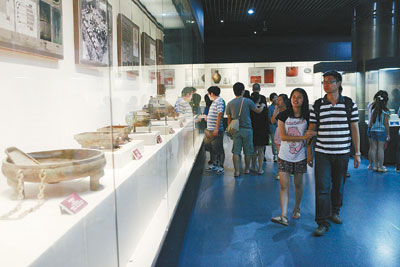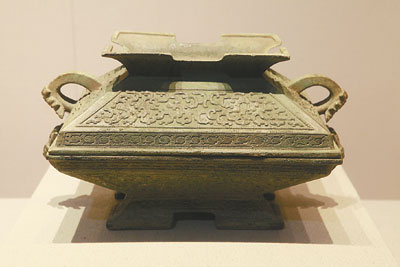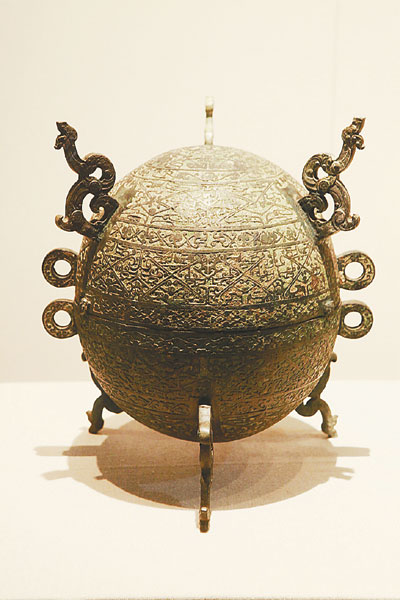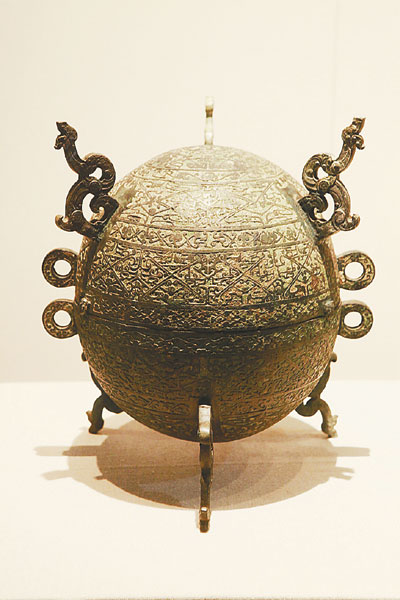|

Deng Hanneng
deng.hneng@gmail.com
SUIZHOU is a city in Central China’s Hubei Province. More than 2,000 years ago, it was a powerful state. Sui was the most important region to the east of the Hanjiang River, according to “Zuo Zhuan,” the earliest Chinese work of narrative history and covering the period from 722 to 468 B.C.
For this reason, Suizhou has seen the excavation of many bronze wares that date back to the Western Zhou Dynasty (1046-771 B.C.) and the early stages of the Warring States Period (475-221 B.C.).

Well-known historical sites of Sui include the Tomb of Marquis Yi of Zeng, one of a handful of ancient Chinese imperial tombs to have been discovered intact and then excavated using modern archaeological methods; No. 2 tomb at Leigudun, which is smaller than Zeng’s tomb in scale but still massive and magnificent; Yangzishan cemetery and Ye Jiashan cemetery, both excavated after the year 2000 with findings that shocked the world.
Now Shenzheners can have a glimpse of the glorious history of Sui with bronze wares excavated from the area being shown at Shenzhen Museum.
Eighty-one bronze articles are on display at the exhibition, including bronze wares used at ceremonies, bronze musical instruments, and bronze weapons. Nearly half of them were discovered in recent years.

The most eye-catching exhibits are bronze wares of the State of E unearthed from Yangzishan Cemetery.
The State of E is one of the three states of the Shang Dynasty (1766-1122 B.C.), often mentioned in ancient documents. Since 1975, three Western Zhou Dynasty (1027-771 B.C.) tombs have been excavated in Yangzishan and quite a few bronze wares marked with “Marquis E” have been unearthed.
The most important discovery came in November 2007, when archaeologists excavated a tomb from the early Western Zhou Dynasty and unearthed 27 bronze articles.
The tomb is believed to belong to a king of the E state in the early Western Zhou Dynasty. Among the bronze articles is a grand jug with exquisite patterns which could be used exclusively by a member of the imperial family.
While the bronze articles marked with “Marquis E” show that the capital of the State of E was located in Suizhou, other articles on display at the exhibition show that Sui was also the center of an ancient state named Zeng.
 Zeng was a mysterious state of the Western Zhou Dynasty. It is not recorded in history, but the name of the state has been marked in bronze wares discovered in Suizhou.
Zeng was a mysterious state of the Western Zhou Dynasty. It is not recorded in history, but the name of the state has been marked in bronze wares discovered in Suizhou.
In the history of Suizhou, there were three important archaeological discoveries related to the State of Zeng. In 1978, 1981 and 2011, tombs of three Zeng kings were unearthed, including the tomb of Marquis Yi, the tomb of one of his offsprings and one of his ancestors.
Thousands of precious bronze articles were unearthed, including a set of 65 chime bells, the largest set of bronze chimes ever discovered in the world. Such bells were used exclusively by kings and marquises in ancient China.
The exhibition is jointly held by Shenzhen Museum and Suizhou Museum. It will run till Oct. 21.
Time: 9 a.m.-5 p.m., now through Oct. 21
Venue: Shenzhen Museum, Jintian Road, Futian District
Metro: Civic Center (市民中心) , Exit C
|

